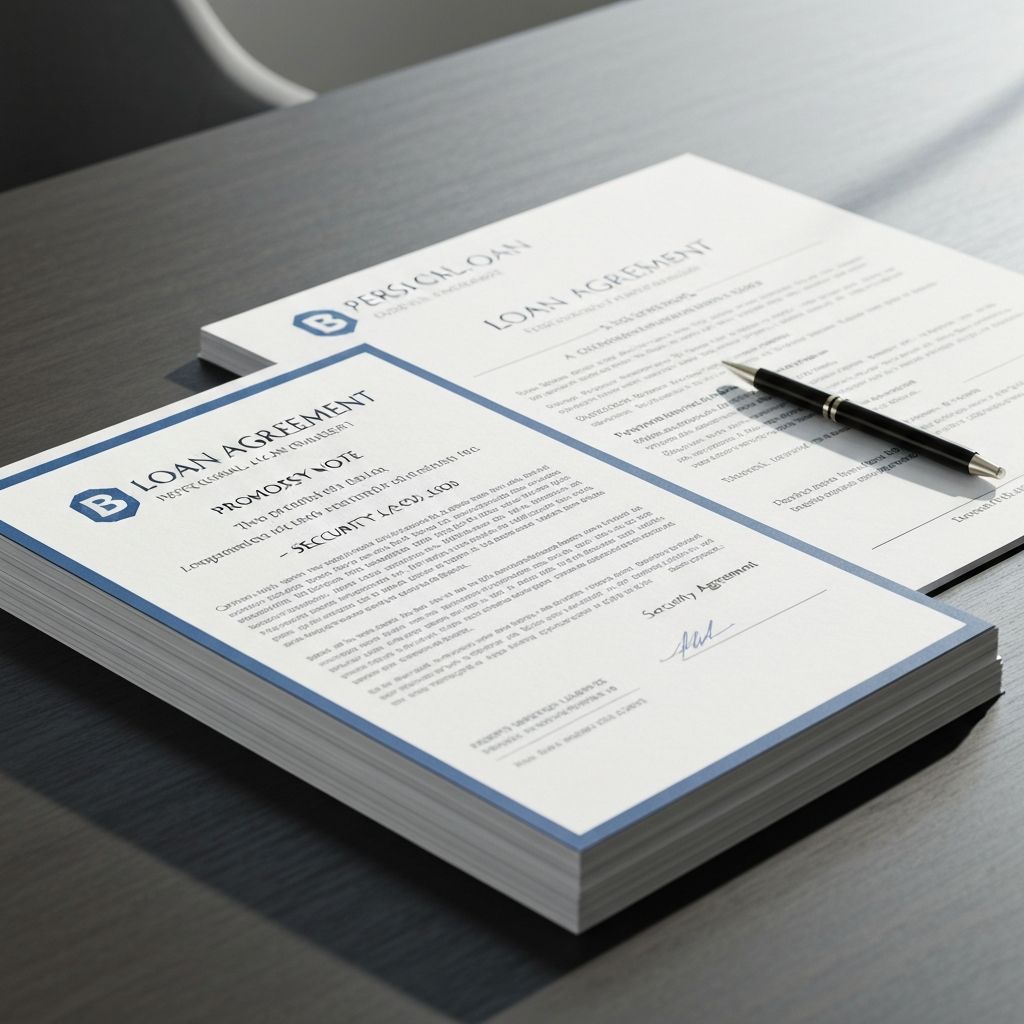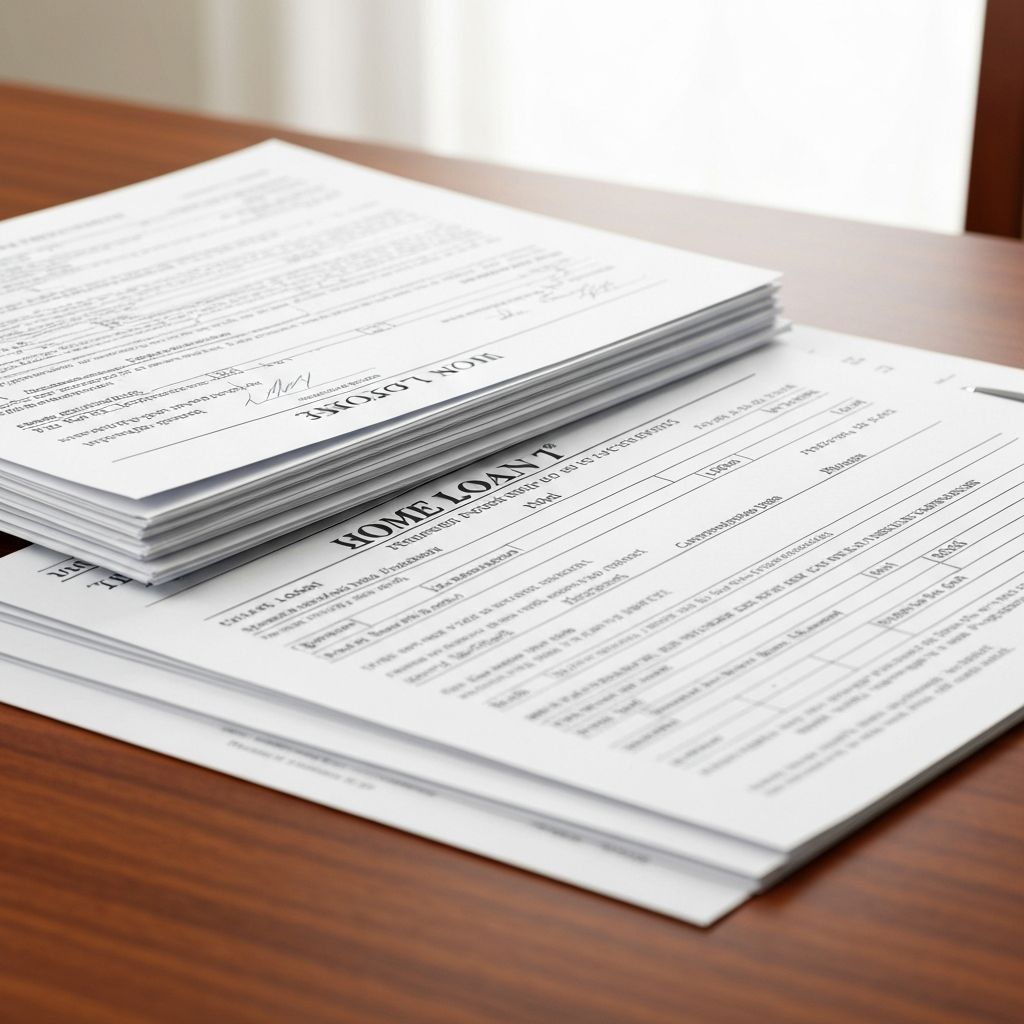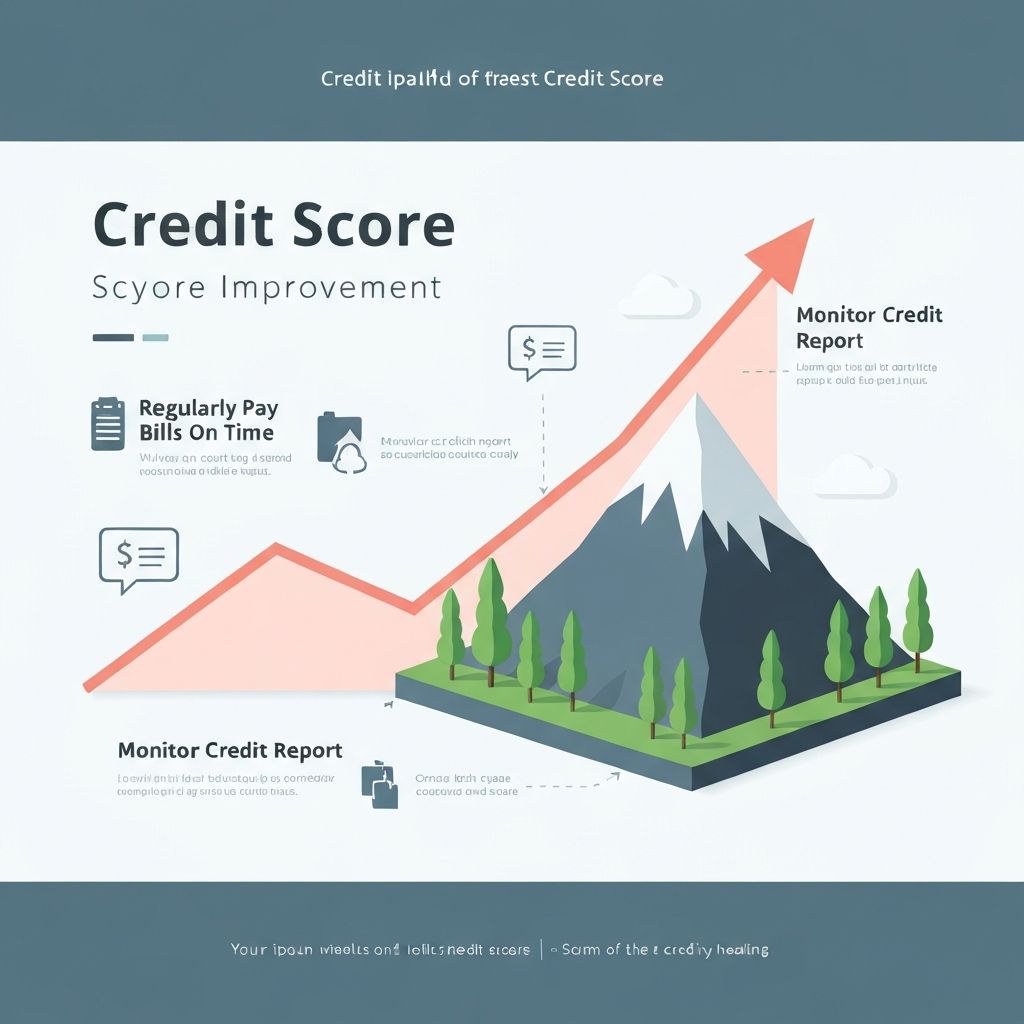Personal loans have become one of the most popular financial products in India, offering quick access to funds without collateral. Whether you need money for a wedding, medical emergency, home renovation, or debt consolidation, understanding how personal loans work is crucial to making an informed decision.
According to the Reserve Bank of India, personal loan disbursements have grown consistently at 18-20% annually, reaching over ₹9.8 lakh crores. This growth reflects increasing consumer confidence and the ease of digital lending. However, with interest rates ranging from 10.50% to 24%, choosing the right lender can save you lakhs in interest payments over the loan tenure.
What is a Personal Loan?
A personal loan is an unsecured loan that doesn't require any collateral or security. Banks and NBFCs (Non-Banking Financial Companies) offer personal loans based on your creditworthiness, income stability, and repayment capacity. The loan amount typically ranges from ₹50,000 to ₹40 lakhs, with flexible tenure options from 1 to 5 years.
Unlike home loans or car loans where the property or vehicle serves as collateral, personal loans are approved purely based on your ability to repay. This makes them riskier for lenders, which is why interest rates are higher compared to secured loans.
Current Interest Rates Comparison
Personal loan interest rates in India vary significantly across lenders based on your credit profile. Here's what major banks and NBFCs are currently offering:
- HDFC Bank: 10.50% - 21.00% per annum - View Complete Details & Apply
- ICICI Bank: 10.75% - 19.00% per annum - Check Eligibility & Rates
- SBI: 11.15% - 15.00% per annum - Compare SBI Loan Options
- Axis Bank: 10.49% - 22.00% per annum
- Kotak Mahindra Bank: 10.99% onwards
- Bajaj Finserv: 13.00% - 30.00% per annum
- Tata Capital: 10.99% - 24.00% per annum
Your actual interest rate depends on multiple factors including credit score, income level, employment type, existing relationship with the bank, and loan amount. Use our Personal Loan EMI Calculator to estimate your monthly payments at different interest rates and tenures.
💡 Expert Tip:
A difference of just 1% in interest rate can save you thousands of rupees. For example, on a ₹5 lakh loan for 5 years, a 1% lower rate saves you approximately ₹13,500 in total interest!
Eligibility Criteria Explained
While eligibility requirements vary by lender, here are the standard criteria most banks and NBFCs follow:
Age Requirements
- Minimum age: 21-23 years at the time of loan application
- Maximum age: 58-65 years at loan maturity (varies by lender)
- Note: Some lenders offer loans to individuals up to 70 years if they're salaried or have a stable pension
Income Requirements
- Salaried individuals: Minimum net monthly income of ₹15,000 - ₹25,000 (varies by city and lender)
- Self-employed professionals: Minimum annual income of ₹2-3 lakhs
- Self-employed businessmen: Minimum annual turnover of ₹10-15 lakhs
Credit Score Requirements
Your credit score is the most critical factor in loan approval and interest rate determination:
- 750+: Excellent - Highest approval chances, lowest interest rates (10.50% - 12.00%)
- 700-749: Good - High approval chances, competitive rates (12.00% - 14.00%)
- 650-699: Fair - Moderate approval chances, higher rates (14.00% - 18.00%)
- Below 650: Poor - Low approval chances, very high rates (18.00% - 24.00%) or rejection
Check your credit score for free before applying to understand your eligibility and expected interest rate. A score above 750 can help you negotiate rates 2-4% lower than standard offerings.
Employment Stability
- Salaried employees: Minimum 2 years of total work experience with at least 1 year in current organization
- Self-employed: Business should be operational for at least 3 years with consistent profitability
- Preferred employers: Government employees, PSU staff, and employees of top-rated companies often get preferential rates
Documents Required for Application
Having all documents ready speeds up the approval process. Here's what you'll need:
Identity Proof (any one)
- Aadhaar Card
- PAN Card (mandatory for all loans)
- Passport
- Voter ID Card
- Driving License
Address Proof (any one)
- Aadhaar Card
- Passport
- Utility bills (electricity, water, gas) not older than 3 months
- Rent agreement (if rented)
- Property documents (if owned)
Income Proof
For Salaried:
- Last 3 months' salary slips
- Last 2 years' Form 16
- Last 6 months' bank statements showing salary credits
- Employment certificate or offer letter
For Self-Employed:
- Last 2 years' ITR (Income Tax Returns) with computation
- Last 6-12 months' bank statements
- Business proof (GST registration, Shop Act license, etc.)
- Audited financial statements (P&L, Balance Sheet)
- Business continuity proof
Additional Documents
- 2 passport-size photographs
- Existing loan statements (if any)
- Credit card statements (if any)
Top Personal Loan Lenders Compared
1. HDFC Bank Personal Loan
Loan Amount: ₹50,000 to ₹40 lakhs
Interest Rate: Starting from 10.50% per annum
Processing Fee: Up to 2.5% of loan amount + GST
Disbursal Time: 48 hours for existing customers, 7-10 days for new customers
Prepayment Charges: 2-4% of outstanding principal (after 6 months: Nil for floating rate)
Key Features: Quick approval, minimal documentation for existing customers, flexible repayment options, top-up facility available, doorstep service
→ Read Complete HDFC Personal Loan Review & Apply
2. ICICI Bank Personal Loan
Loan Amount: ₹50,000 to ₹50 lakhs
Interest Rate: Starting from 10.75% per annum
Processing Fee: Up to 2.5% of loan amount + GST
Disbursal Time: 24 hours for pre-approved customers, 5-7 days for new customers
Prepayment Charges: 3-5% of outstanding principal (Nil after 12 months)
Key Features: Instant approval for pre-approved customers, doorstep service, flexible EMI options, balance transfer facility, overdraft option available
→ Check ICICI Personal Loan Eligibility & Rates
3. SBI Personal Loan (Xpress Credit)
Loan Amount: ₹25,000 to ₹20 lakhs
Interest Rate: Starting from 11.15% per annum
Processing Fee: 1.5% + GST (minimum ₹1,000)
Disbursal Time: 7-10 working days
Prepayment Charges: Nil after 6 months
Key Features: Lower interest rates for government employees, no prepayment charges after 6 months, special schemes for pensioners, trusted government bank
→ Compare SBI Personal Loan Options & Apply
For a complete comparison of all lenders including Axis Bank, Kotak Mahindra, Bajaj Finserv, and more, visit our comprehensive Personal Loans comparison page.
How to Get the Best Personal Loan Deal
1. Improve Your Credit Score Before Applying
Your credit score is the single most important factor affecting your interest rate. Before applying:
- Check your credit score for free
- Pay off existing debts to improve your debt-to-income ratio
- Avoid multiple loan applications within a short period (each creates a hard inquiry)
- Ensure timely payment of all bills and EMIs for at least 6 months
- Correct any errors in your credit report immediately
A score improvement from 680 to 750 can reduce your interest rate by 2-3%, saving you ₹50,000+ on a ₹5 lakh loan over 5 years!
2. Compare Multiple Lenders Thoroughly
Don't settle for the first offer you receive. Use our comparison tools to evaluate:
- Interest rates (even 0.5% difference matters)
- Processing fees (ranges from 0.5% to 2.5%)
- Prepayment charges (some banks charge 2-5%, others have nil charges)
- Foreclosure charges
- Late payment penalties
- Bounce charges
Use our Personal Loan EMI Calculator to compare total cost across lenders.
3. Negotiate with Your Existing Bank
If you have a good relationship with your bank, leverage it:
- Salary account holders often get 0.5-1% rate reduction
- Existing customers with good repayment history can negotiate better terms
- Mention competing offers to strengthen your negotiation position
- Ask for waiver or reduction in processing fees
- Request for nil prepayment charges
4. Choose the Right Loan Tenure
Tenure selection significantly impacts your total interest outgo. While longer tenures mean lower EMIs, you'll pay substantially more interest overall.
Example: ₹5 lakh loan at 12% interest
- 2-year tenure: EMI ₹23,536, Total Interest ₹64,864, Total Payment ₹5,64,864
- 3-year tenure: EMI ₹16,607, Total Interest ₹97,852, Total Payment ₹5,97,852
- 5-year tenure: EMI ₹11,122, Total Interest ₹1,67,320, Total Payment ₹6,67,320
The 5-year tenure costs ₹1,02,456 more than the 2-year tenure! Use our EMI Calculator to find the optimal balance between EMI affordability and total interest cost.
5. Read the Fine Print Carefully
Before signing the loan agreement, understand all terms and conditions:
- Processing fees: Typically 1-2.5% of loan amount + GST
- Prepayment penalties: Can be 2-5% of outstanding principal (some banks have nil charges after 6-12 months)
- Late payment charges: Usually ₹500-1,000 per instance + penal interest of 2-3% per month
- Bounce charges: ₹500-750 per bounce for failed EMI auto-debit
- Loan cancellation charges: If you cancel after approval but before disbursal
- Conversion charges: For converting floating rate to fixed rate or vice versa
Common Mistakes to Avoid
1. Borrowing More Than You Need
Only borrow what you absolutely need to minimize interest costs. Every extra ₹1 lakh borrowed costs you:
- At 12% for 3 years: ₹19,570 in interest
- At 12% for 5 years: ₹33,464 in interest
- At 15% for 5 years: ₹42,748 in interest
2. Ignoring Hidden Charges
Factor in all fees when comparing loans. A loan with 10.5% interest and 2.5% processing fee may be costlier than one with 11% interest and 1% processing fee.
Example on ₹5 lakh loan:
- Option A: 10.5% interest + 2.5% processing fee = ₹12,500 upfront + interest
- Option B: 11% interest + 1% processing fee = ₹5,000 upfront + slightly higher interest
Calculate total cost using our calculator before deciding.
3. Not Reading Loan Terms Thoroughly
Understand all terms before signing:
- Prepayment rules (some banks charge 2-5% penalty, others have nil charges after 6-12 months)
- Late payment penalties (typically ₹500-1,000 per instance + 2-3% penal interest per month)
- Bounce charges (₹500-750 per bounce for failed auto-debit)
- Foreclosure charges (can be 2-4% of outstanding principal)
4. Applying to Multiple Lenders Simultaneously
Each loan application creates a "hard inquiry" on your credit report, which reduces your credit score by 5-10 points. Multiple applications within a short period can:
- Reduce your credit score by 20-30 points
- Signal credit hunger to lenders
- Lead to higher interest rates or rejection
Instead, check eligibility and rates on comparison platforms before formally applying.
5. Ignoring EMI Affordability
Ensure your total EMI obligations (including existing loans and credit cards) don't exceed 40-50% of your monthly income. Banks typically reject applications if debt-to-income ratio exceeds 50%.
Example: If your monthly income is ₹50,000, your total EMIs should not exceed ₹20,000-25,000.
6. Falling for Pre-Approved Offers Blindly
"Pre-approved" doesn't mean "best rate." Always compare with other lenders before accepting. Pre-approved offers may have higher rates than what you can get by applying fresh with a good credit score.
7. Not Considering Loan Insurance
While optional, loan insurance can protect your family from debt burden in case of unfortunate events. However:
- Don't buy insurance bundled with the loan (usually expensive)
- Compare standalone term insurance plans separately
- Ensure you're not over-insured
Frequently Asked Questions
What is the maximum personal loan amount I can get?
Most banks offer personal loans up to ₹40-50 lakhs. However, your eligibility depends on your income, credit score, and existing obligations. Typically, banks offer 10-20 times your monthly salary as loan amount.
Can I get a personal loan with a low credit score?
Yes, but with higher interest rates (18-24%) and lower loan amounts. Some NBFCs specialize in loans for low credit scores. However, it's better to improve your credit score before applying to get better rates.
How long does personal loan approval take?
For existing customers with good credit: 24-48 hours. For new customers: 5-10 working days. Digital lenders and NBFCs may approve within hours if all documents are in order.
Can I prepay my personal loan?
Yes, most banks allow prepayment. However, some charge 2-5% of outstanding principal as prepayment penalty. Many banks waive this charge after 6-12 months. Check your loan agreement for specific terms.
What happens if I miss an EMI payment?
Missing an EMI results in:
- Late payment charges (₹500-1,000)
- Penal interest (2-3% per month on overdue amount)
- Negative impact on credit score (can drop by 50-100 points)
- Difficulty in getting future loans
Is personal loan interest tax deductible?
Generally, no. However, if the loan is used for business purposes or home renovation (with proper documentation), you may claim deductions under specific sections. Consult a tax advisor for your specific case. Check our tax planning guide for more information.
Conclusion
Personal loans can be a valuable financial tool when used wisely and chosen carefully. By understanding interest rates, improving your credit score, comparing lenders thoroughly, and choosing the right tenure, you can secure the best deal for your needs and save lakhs in interest payments.
Remember: The cheapest loan is the one you don't take. Before applying, explore alternatives like:
- Using savings or emergency fund
- Borrowing from family or friends (interest-free)
- Considering a loan against property if you own real estate (rates start from 8.50%)
- Using a credit card for short-term needs (if you can pay within interest-free period)
- Selling unused assets
If you do need a personal loan, use our Personal Loan EMI Calculator to estimate your monthly payments and plan your finances better. For personalized loan recommendations and instant eligibility check with multiple lenders, visit our Personal Loans comparison page.
✅ Ready to Apply?
Compare personal loan offers from 15+ lenders, check your eligibility instantly, and get the best interest rates. Start comparing now →




